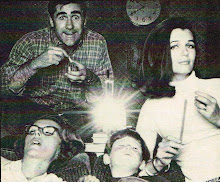
Johnny Walters drove my '68 Dodge Charger into the back of an Army deuce and half legally parked on Butner Road. Walters was stoned to the bejesus and, like any trusting and brain dead Private First Class, I gave him my car to make a lunch run to the McDonalds just off post.
Looking for a replacement, I found a Porsche 356C for $5,000. A great deal and God knows the bullet I dodged. Thankfully, the Ft Bragg Credit Union refused to fiance anything older than 8years. I got a tip from a buddy in Public Affairs that a civilian he worked with was selling a 1977 Fiat X1/9. That's the bullet that didn't miss.

The credit union happily financed the car with as many months as I had left in the Army. Major improvements to the car's performance were attended to immediately. Cocoa mats, an X1/9 reflective strip across the top of the windshield and a Fiat gear shift knob. I found a crazy Italian mechanic who had worked at Ferrari in Italy. He and I became very close.
I put a Pioneer Super Tuner Cassette in the dash and since there wasn't anyplace big enough to mount 6"x9" Jensen tri-axles, I just stuffed 'em behind the seats. Ultravox, Fleetwood Mac, Kool and the Gang, Boston, The Bee Gees, Rod Stewart and KC & The Sunshine Band cassettes were all slotted in the fake red velvet interior of a fake leather brief case stuck in the spare tire well behind the passenger seat.

It wasn't what you'd call a popular car with the ladies. Certainly not in Fayettville where Camaros and Trans Ams ruled the day. Still, it did get noticed but almost never in a good way. Less than five minutes from Ft Bragg and you'd easily travel back in time to 1860. I was scared shitless on more than one occasion. And I was white.
My biggest concern was the car breaking down. Which it did. A lot. Each time I picked it up from the shop, I'd swear I was gonna put a For Sale on it. And each time I drove from the shop, I fell in love with it all over again. It wasn't fast but it handled like a horny woman in a Baptist Church choir. Confident, firm footed, loud and tight.
 I went back to college after the Army. I'm not sure if it was the crazy Italian mechanic or my living on the G.I. Bill, but it soon became too much to keep up with. No one wanted to work on a mid-engine car and if they did... a pound of flesh was a bargain.
I went back to college after the Army. I'm not sure if it was the crazy Italian mechanic or my living on the G.I. Bill, but it soon became too much to keep up with. No one wanted to work on a mid-engine car and if they did... a pound of flesh was a bargain.The tape deck was stolen. Anti freeze leaked over the cocoa mats. I learned Italian from the fuse box. Finally, there were signs of a coastal Florida cancer. Rust. It was everywhere. But it made it, just, through college. I sold it for $500 to a Cuban mechanic and spent $99 on a one way ticket to Newark on People's Express.

Sure it broke. And some folks thought I was a hair dresser for owning one. But, you know what? I wish I'd gone to hair dressing school. You know how much you can make in NYC cutting women's hair?

















































